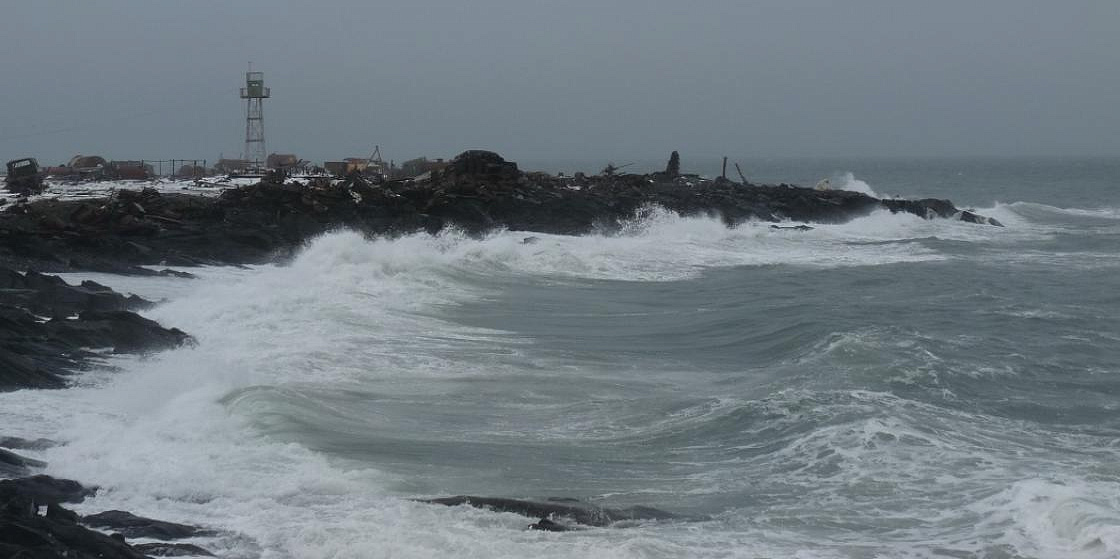
Photo: Kuznetsov Nikita/GeoPhoto.ru
List of Arctic Development Initiatives Okayed by Government
On 6 October, the Russian Government approved the list of initiatives aimed at fostering economic growth in the country until 2030. The document defines focal areas that will receive the most support from the federal authorities and a major portion of investments originating from both private and public sectors. In total, there are 42 such initiatives broken down into 6 categories, namely Social Policy, Construction, Environment, Technological Breakthrough, and Government for Citizens.
Many of these initiatives directly apply to the Arctic and the opportunities its development provides.
For instance, the Big Cleanup initiative, which is part of the Environment category, is crucial for the Russian Arctic, with removing MSW from the region being a long-term priority of this Government. In turn, the initiative titled Low-Carbon Development Policy is expected to bring about change in the manufacturing and mining sectors with a view to decreasing their environmental footprint, including in the High North.
Technological Breakthrough is both the biggest and arguably the “most Arctic” category of all, with many of its initiatives being either way related to the polar and subpolar regions. Gas fields located in the Russian Arctic will fuel not only breaking into the LNG market (this is how another initiative listed in the document under this category is titled) but also the hydrogen-producing industry to be created in Russia under the Clean Energy (Hydrogen and RES) initiative. One more initiative, New Atomic Power, Including Small Reactors for Remote Areas, will be implemented based on the experience gained in designing nuclear reactors for, and deploying them in, the Russian High North -- namely, at the Baimskaya mining facility and copper plant, as well as some other projects.
An All-Season Northern Sea Route is a yet another Arctic-related initiative included in the government-approved list. First off, making the NSR navigable all year round will enable Russia to provide a stable supply of LNG and hydrogen fuel produced in the Russian Arctic to the rapidly growing markets of Southeast Asia. Secondly, implementing this initiative will open the way for establishing a transit freight line on the NSR.
The approval of the mentioned list is a sign of the growing importance of the Arctic in the context of Russia’s development prospects. In this light, the government, big business and the expert community should work closely together to give full support to efforts aimed at implementing these initiatives.
Arctic Today is a column by PORA CEO Alexander Stotskiy analyzing major international, national and regional events and trends in the Arctic.
Many of these initiatives directly apply to the Arctic and the opportunities its development provides.
For instance, the Big Cleanup initiative, which is part of the Environment category, is crucial for the Russian Arctic, with removing MSW from the region being a long-term priority of this Government. In turn, the initiative titled Low-Carbon Development Policy is expected to bring about change in the manufacturing and mining sectors with a view to decreasing their environmental footprint, including in the High North.
Technological Breakthrough is both the biggest and arguably the “most Arctic” category of all, with many of its initiatives being either way related to the polar and subpolar regions. Gas fields located in the Russian Arctic will fuel not only breaking into the LNG market (this is how another initiative listed in the document under this category is titled) but also the hydrogen-producing industry to be created in Russia under the Clean Energy (Hydrogen and RES) initiative. One more initiative, New Atomic Power, Including Small Reactors for Remote Areas, will be implemented based on the experience gained in designing nuclear reactors for, and deploying them in, the Russian High North -- namely, at the Baimskaya mining facility and copper plant, as well as some other projects.
An All-Season Northern Sea Route is a yet another Arctic-related initiative included in the government-approved list. First off, making the NSR navigable all year round will enable Russia to provide a stable supply of LNG and hydrogen fuel produced in the Russian Arctic to the rapidly growing markets of Southeast Asia. Secondly, implementing this initiative will open the way for establishing a transit freight line on the NSR.
The approval of the mentioned list is a sign of the growing importance of the Arctic in the context of Russia’s development prospects. In this light, the government, big business and the expert community should work closely together to give full support to efforts aimed at implementing these initiatives.
Arctic Today is a column by PORA CEO Alexander Stotskiy analyzing major international, national and regional events and trends in the Arctic.
14 October 2021




